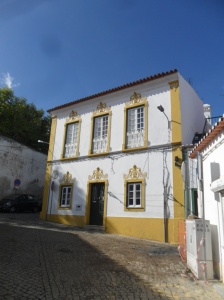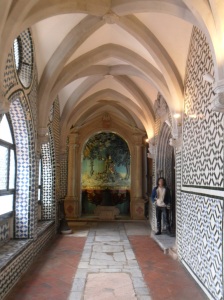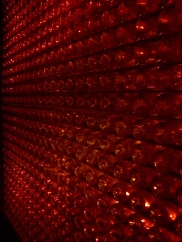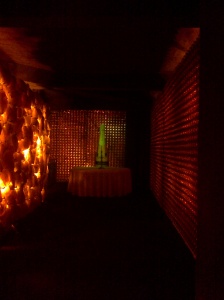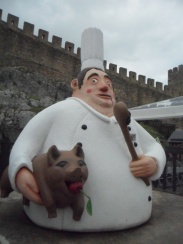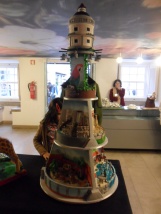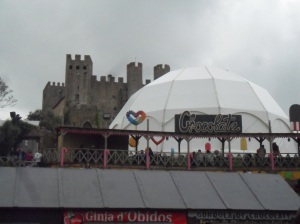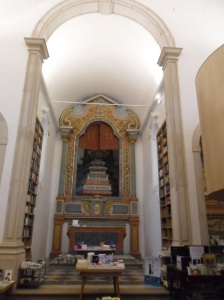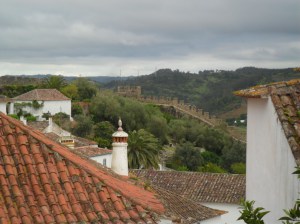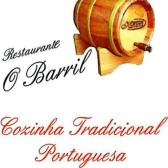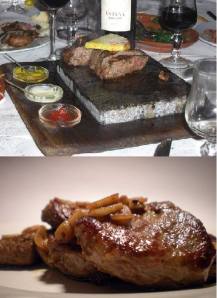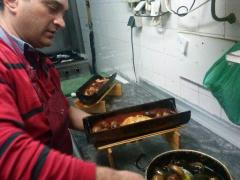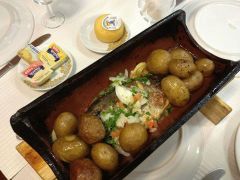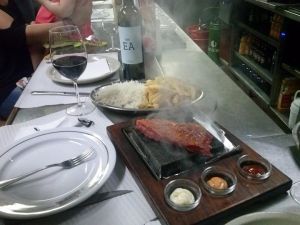 The northern town of Viana do Castelo boasts stunning views of beaches, the Atlantic coastline and blue skies as far as the eye can see. Viewed from the 20th century church of Santa Luzia on a clear day, the town, beaches and bridge across the river make for a picture postcard photo opportunity.
The northern town of Viana do Castelo boasts stunning views of beaches, the Atlantic coastline and blue skies as far as the eye can see. Viewed from the 20th century church of Santa Luzia on a clear day, the town, beaches and bridge across the river make for a picture postcard photo opportunity.
 Viana do Castelo is one of the principal ports from which the discovers (Os Descobridores) set sail in the 16th century as Portugal colonised large parts of South America and India. The port today remains a big employer with naval shipyards constructing and repairing ships. In the last century many Portuguese also went to Canada as cod fishermen, operating in grizzly, bitterly cold conditions, and it’s at Viana do Castelo that you can learn something of their operations aboard the Gil Eannes, a fantastic hospital ship that is gradually being restored.
Viana do Castelo is one of the principal ports from which the discovers (Os Descobridores) set sail in the 16th century as Portugal colonised large parts of South America and India. The port today remains a big employer with naval shipyards constructing and repairing ships. In the last century many Portuguese also went to Canada as cod fishermen, operating in grizzly, bitterly cold conditions, and it’s at Viana do Castelo that you can learn something of their operations aboard the Gil Eannes, a fantastic hospital ship that is gradually being restored.
 For the bargain price of €2 you can go back in time and get up close and personal with the workings of a hospital ship. At €2 I think they’re undercharging for what is a great insight into a past way of life. The ship is in the process of being restored but it still has an edge of grittiness about it There are no beautiful displays onboard, it’s simply quite realistic. From the original dentist’s chair to the operating theatre (yes, really!) this shows the start realities of life for fishermen working in freezing conditions. Even the mixing bowl in the super-sized ship’s kitchen is n a giant scale, showing just how many people the ship catered for at any one time.
For the bargain price of €2 you can go back in time and get up close and personal with the workings of a hospital ship. At €2 I think they’re undercharging for what is a great insight into a past way of life. The ship is in the process of being restored but it still has an edge of grittiness about it There are no beautiful displays onboard, it’s simply quite realistic. From the original dentist’s chair to the operating theatre (yes, really!) this shows the start realities of life for fishermen working in freezing conditions. Even the mixing bowl in the super-sized ship’s kitchen is n a giant scale, showing just how many people the ship catered for at any one time.
Viana do Castelo is a great day out from Porto with trains leaving Porto Campanhã and winding through some fabulous scenery until you cross the bridge into Viana do Castelo itself. It’s best to go between March and the end of October before the rains head across the Atlantic from Canada itself.





